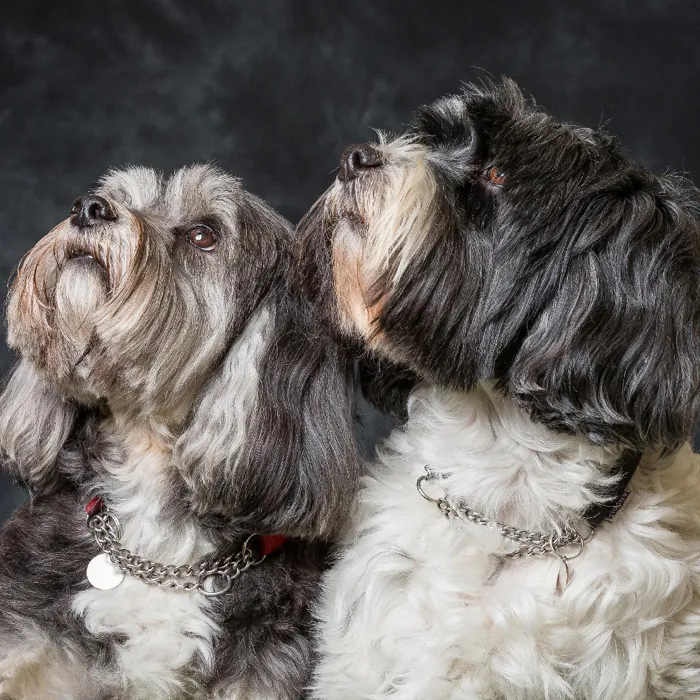Tibetan Terrier

The Tibetan Terrier, “Holy Dog of Tibet,” is an ancient watchdog and companion long associated with Buddhist monasteries. A profusely coated, small-to-medium-sized dog with “snowshoe” feet, the TT is affectionate, sensitive, and clever.

Ask About Tibetan Terrier ?
Breed Traits
Group
Non-Sporting
About
History
Standard
Nutrition
Grooming
Exercise
Training
Health
General Appearance
The Tibetan Terrier is a medium-sized dog, profusely coated, of powerful build, and square in proportion. A fall of hair covers the eyes and foreface. The well-feathered tail curls up and falls forward over the back. The feet are large, flat, and round in shape producing a snowshoe effect that provides traction. The Tibetan Terrier is well balanced and capable of both strong and efficient movement. The Tibetan Terrier is shown as naturally as possible.
Size
Head
Neck and Body
Forequarters
Hindquarters
Coat
Color
Gait
Temperament
All pets have found there homes! Sign up to be notified when new pets are added so you don't miss out.


